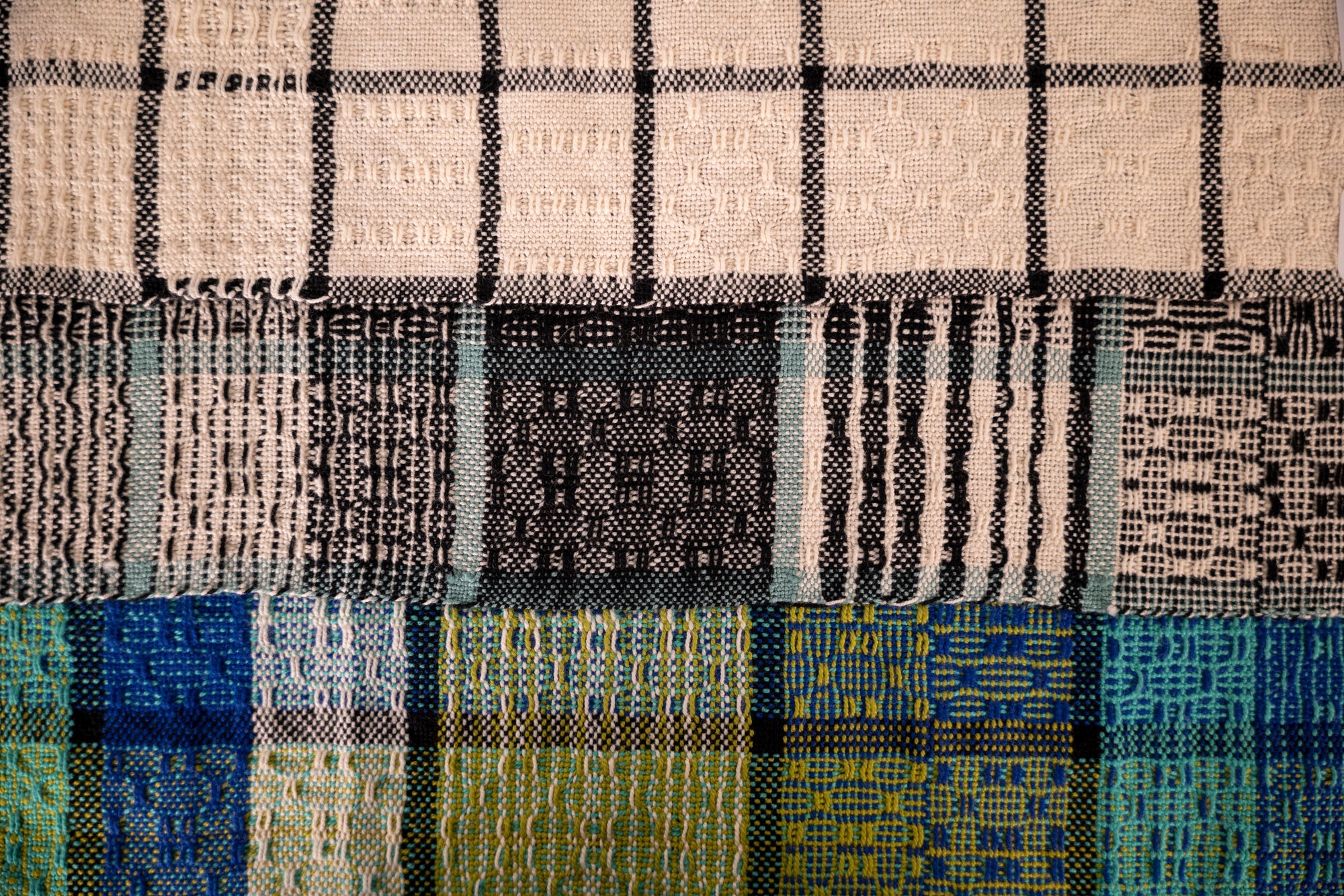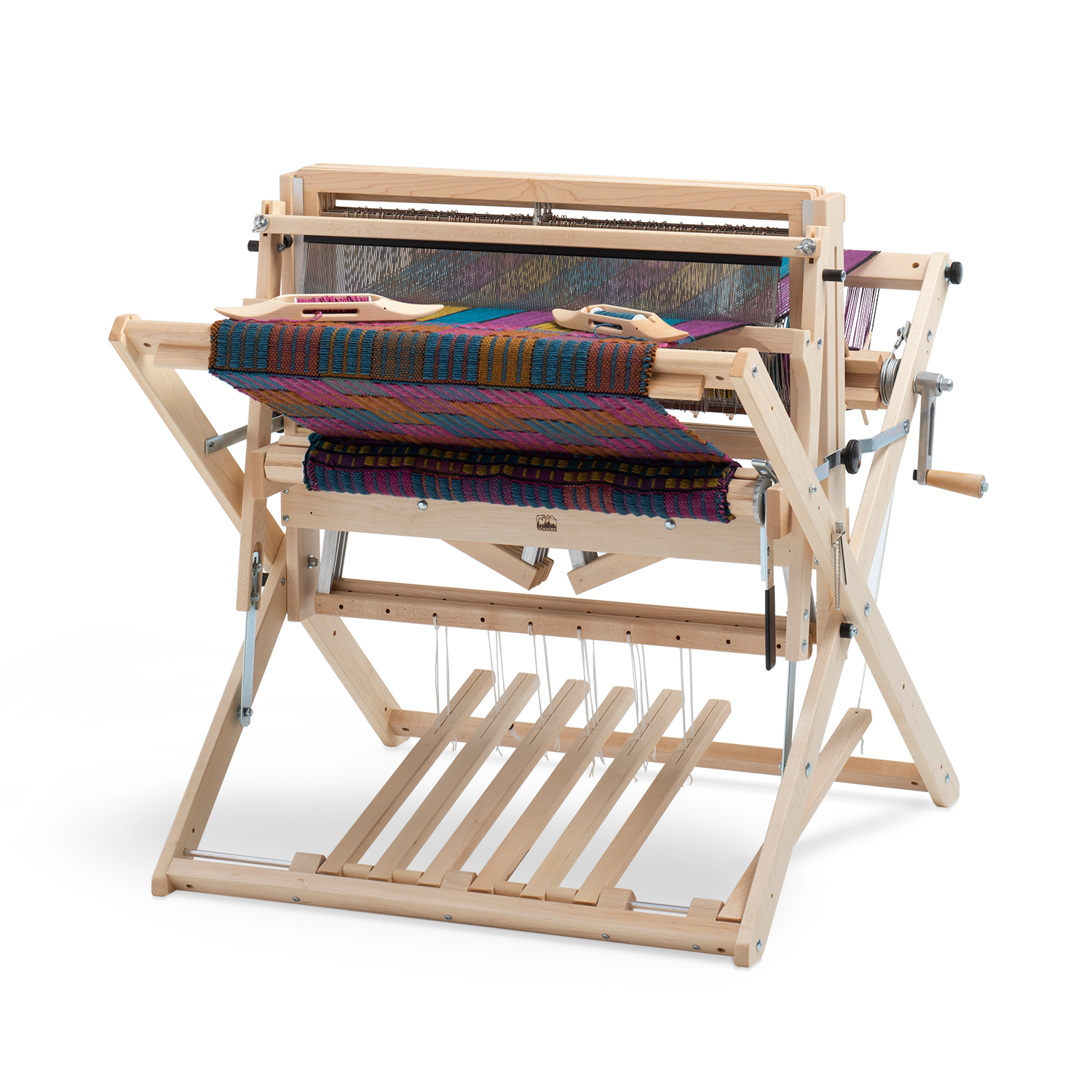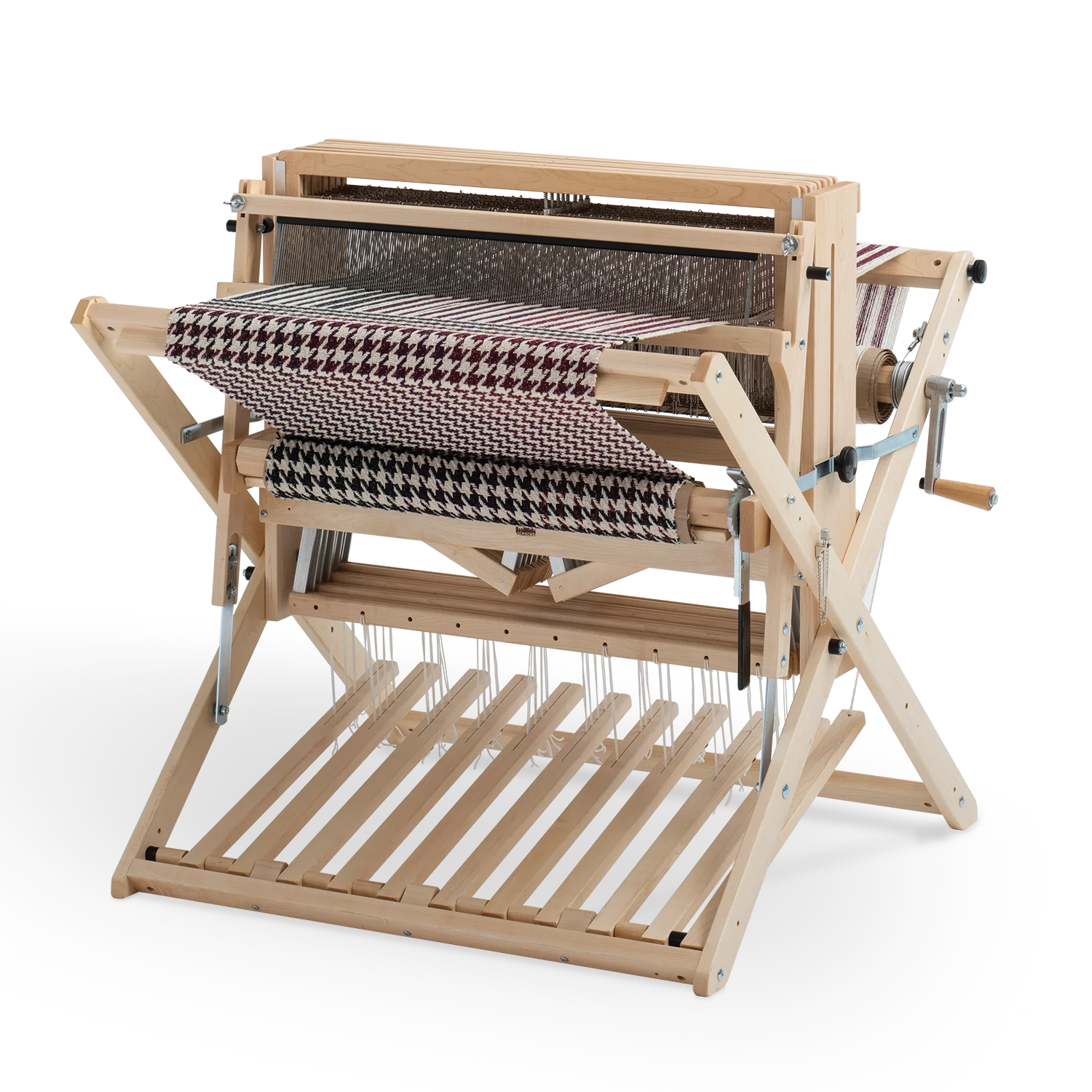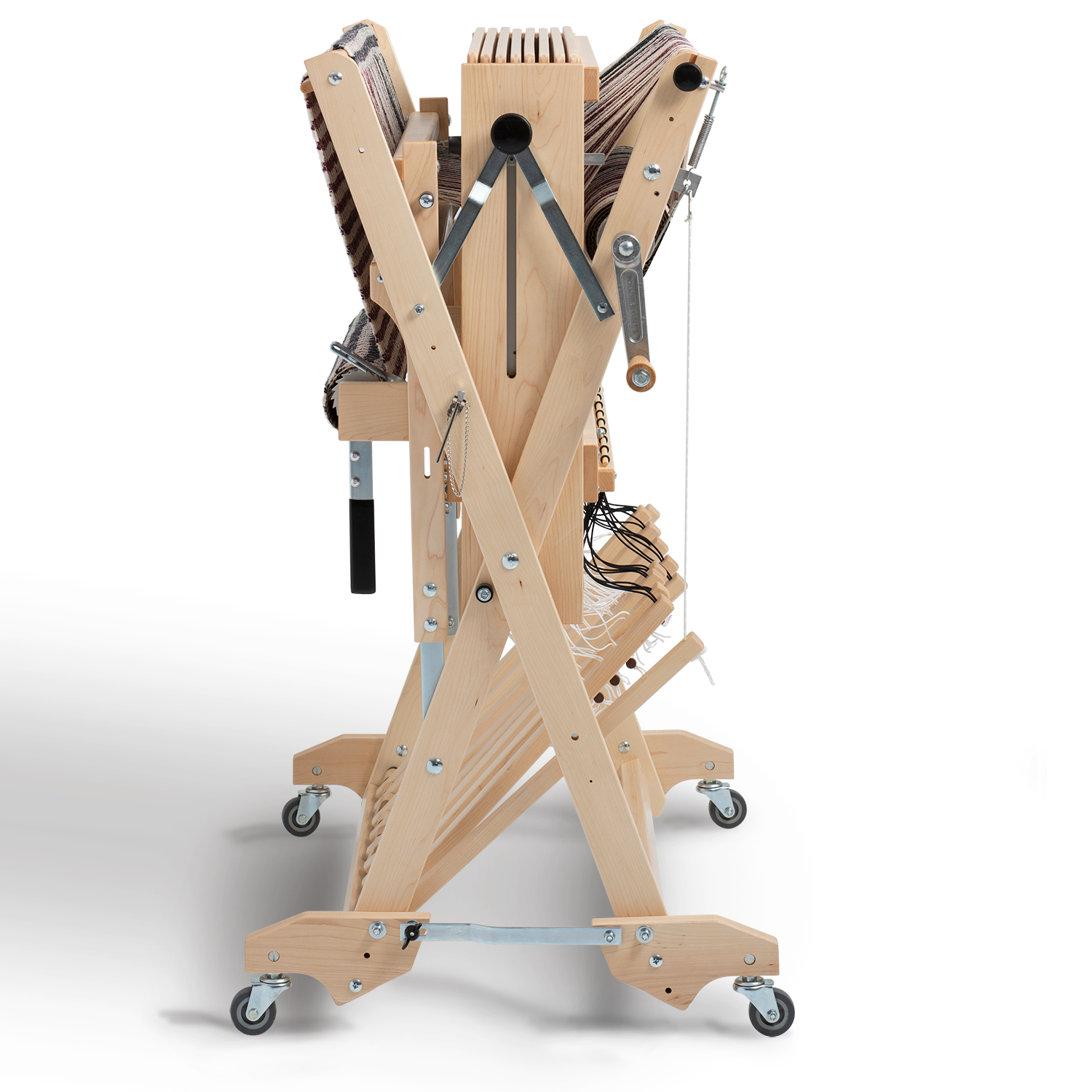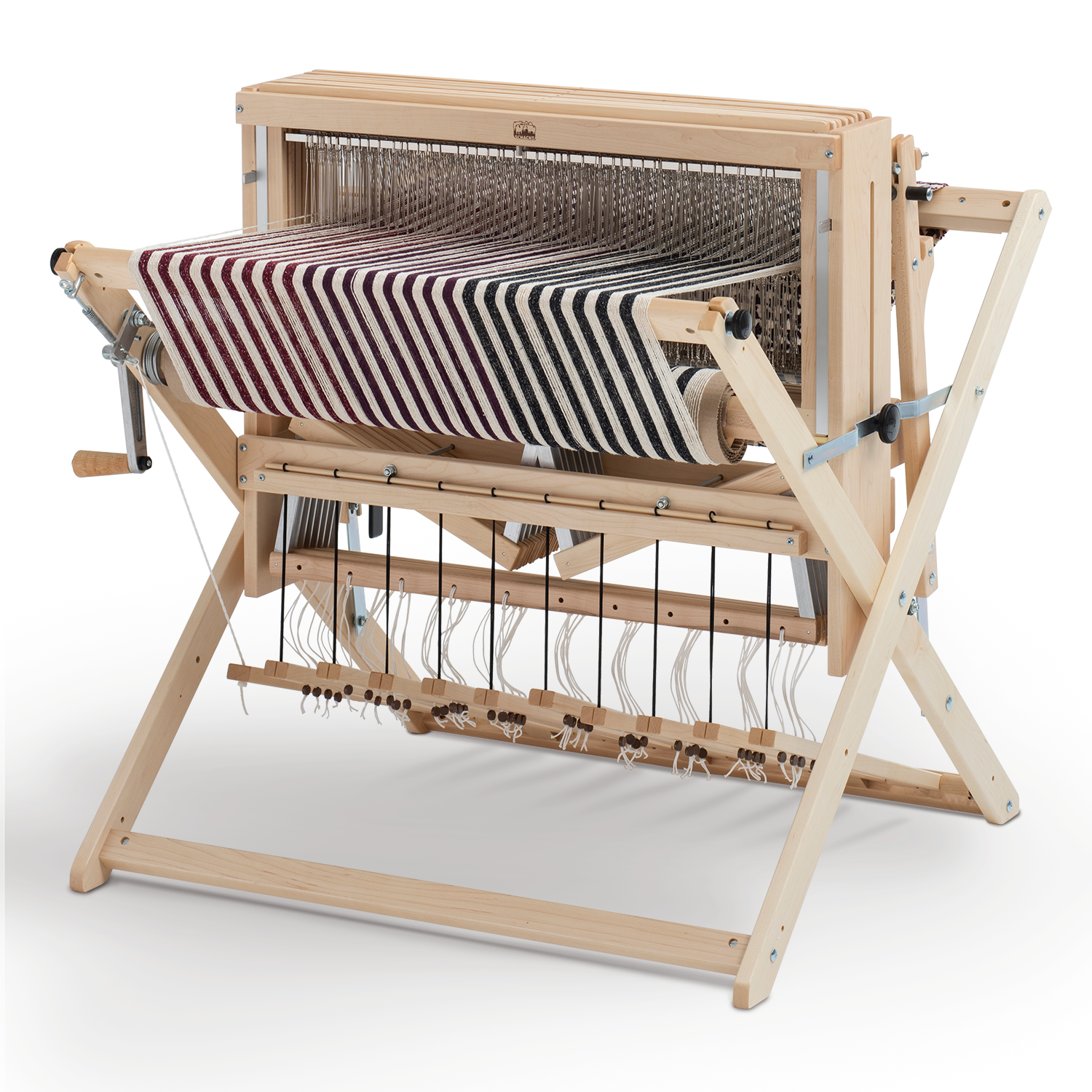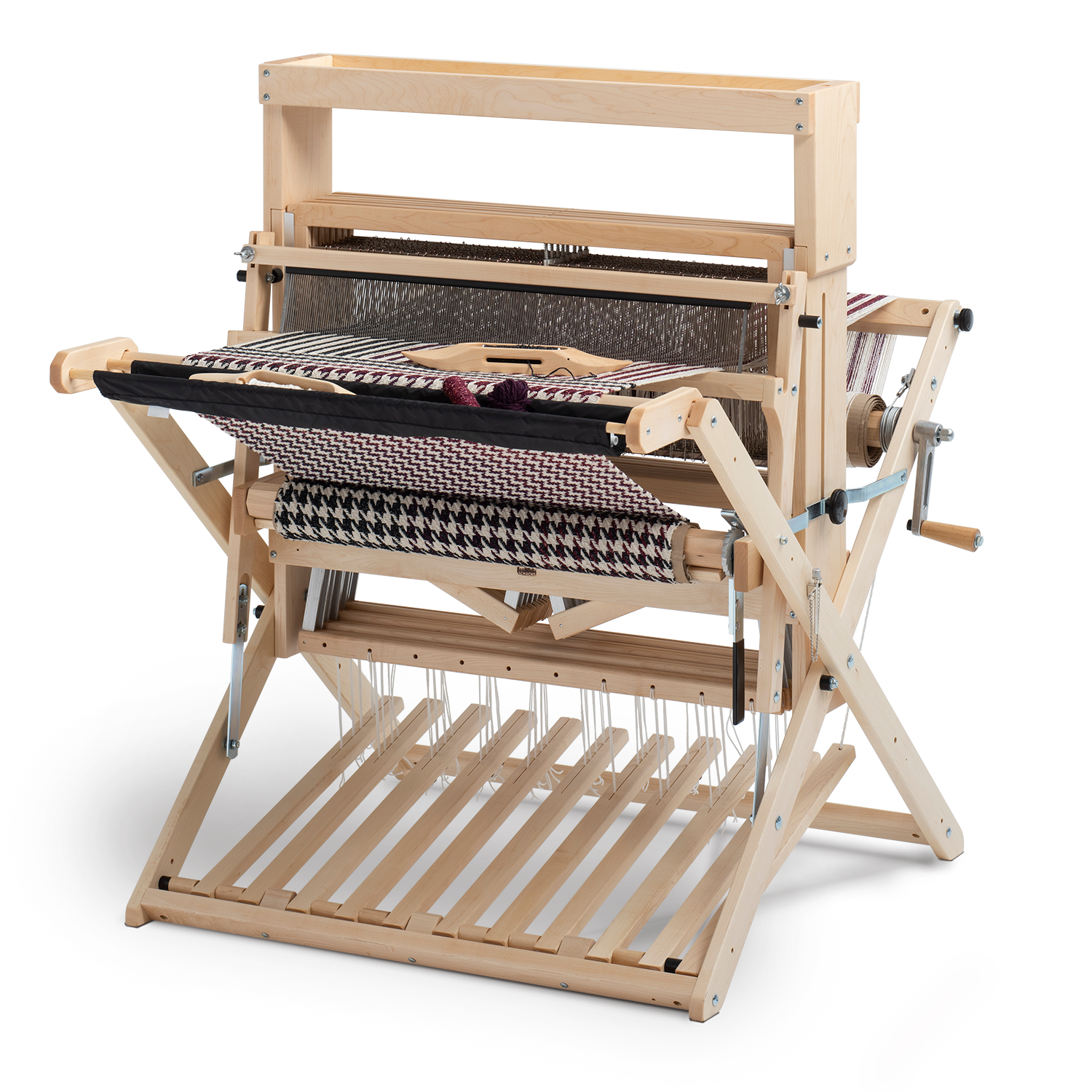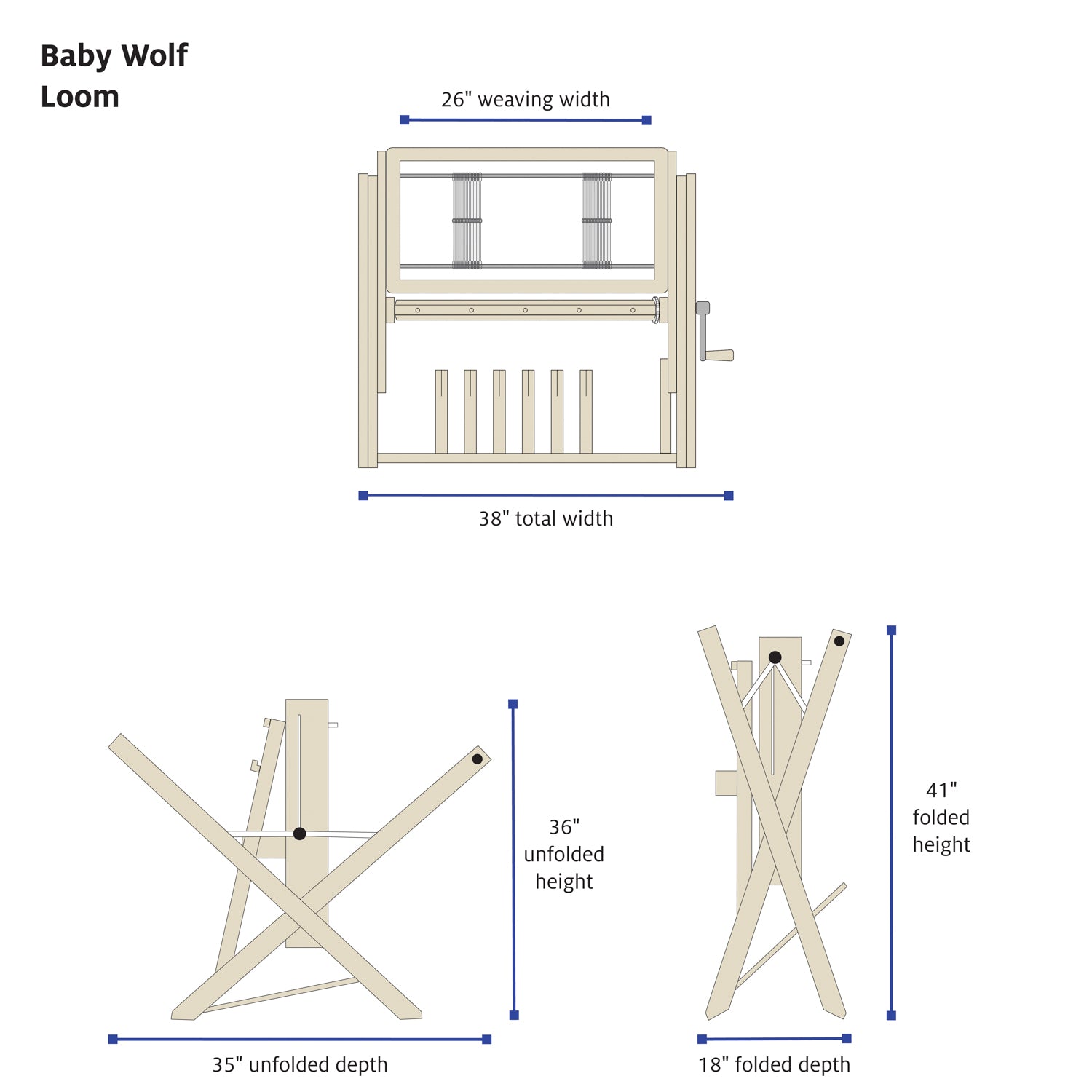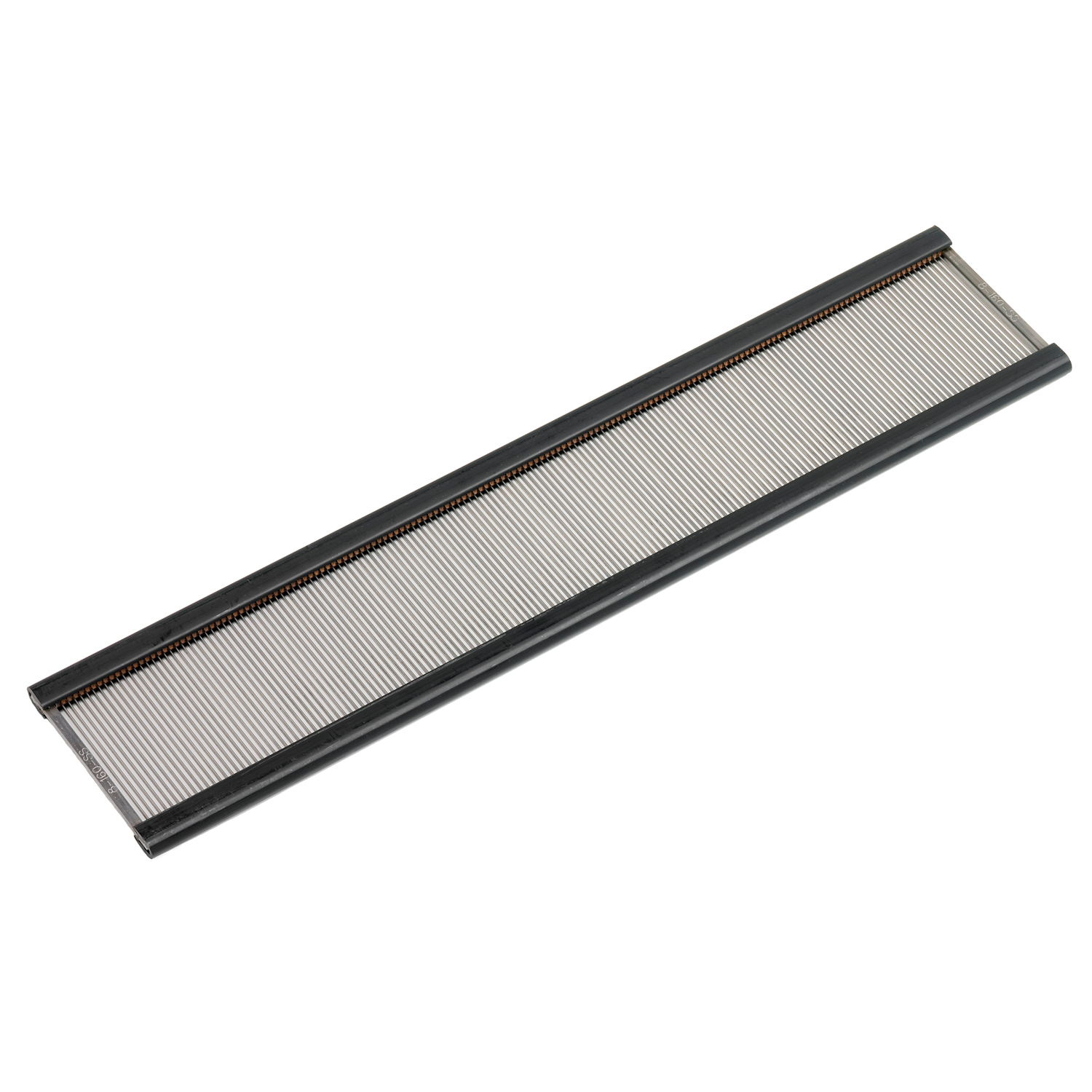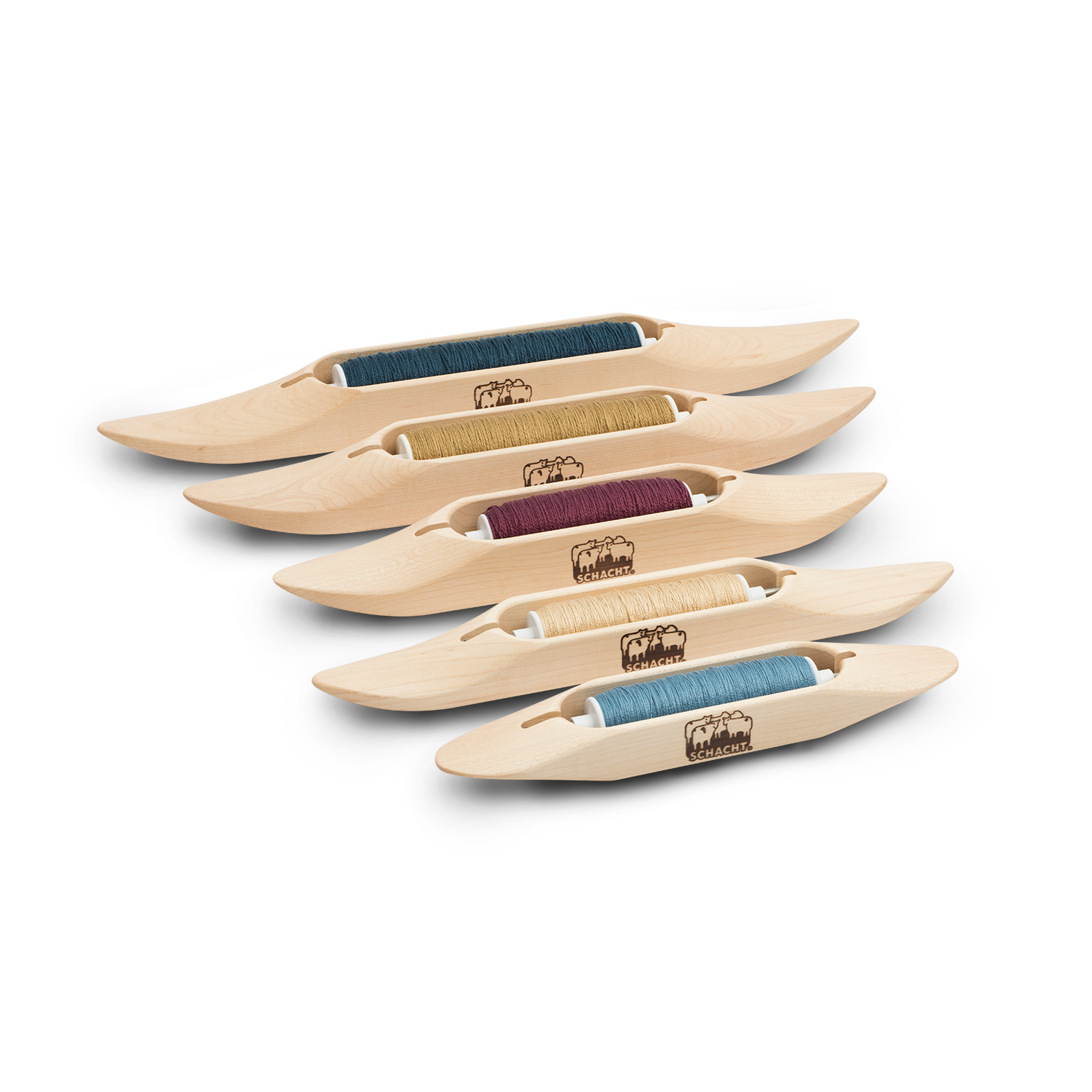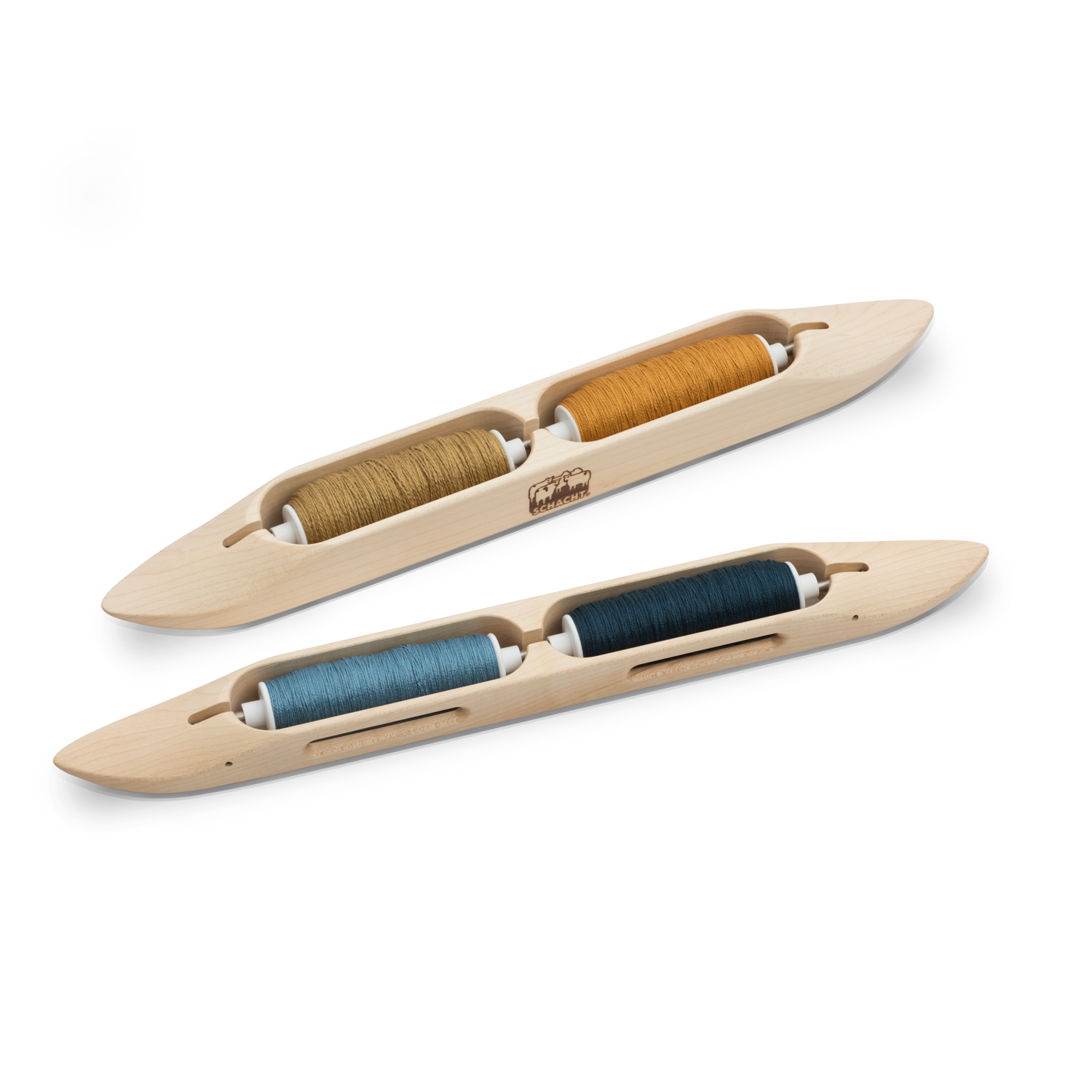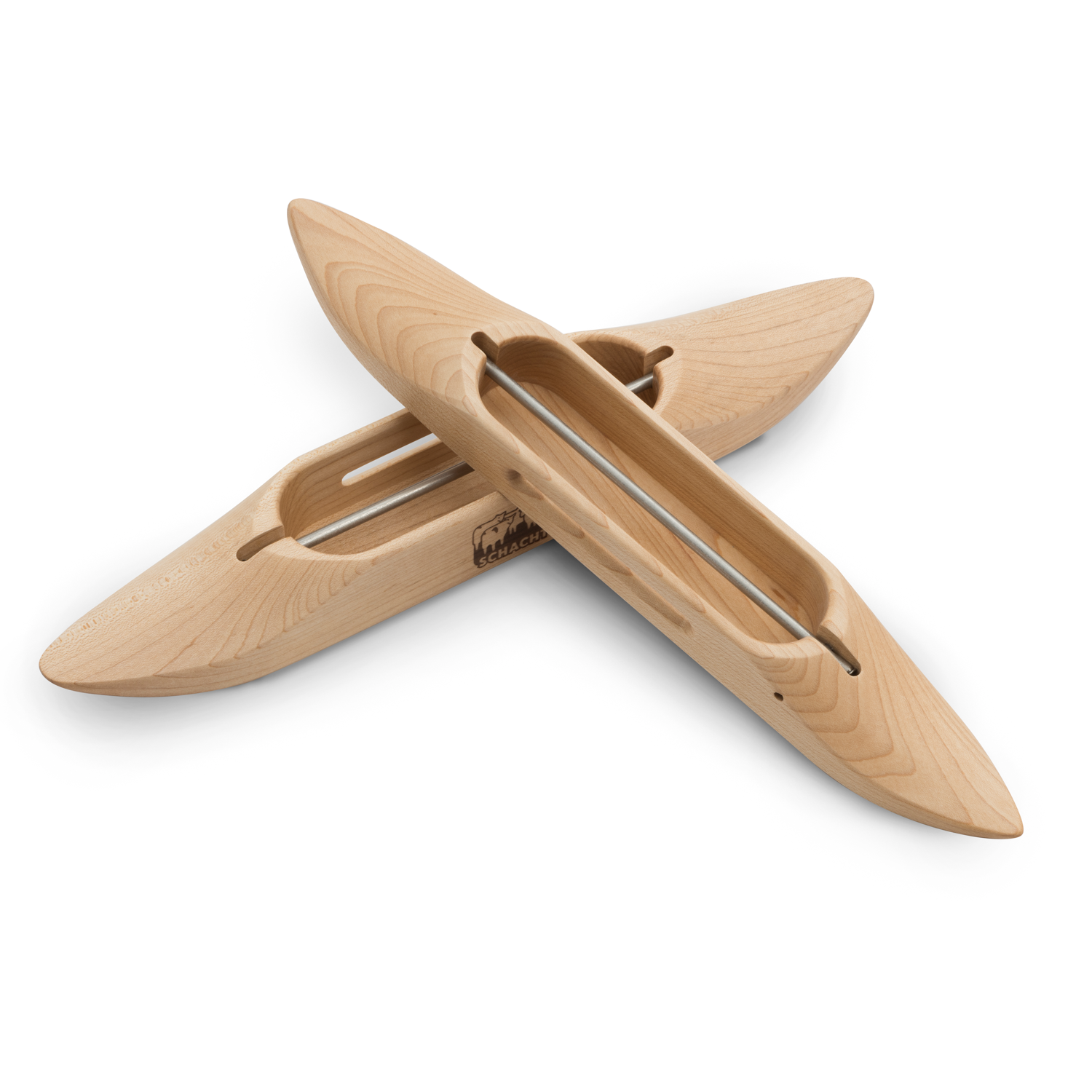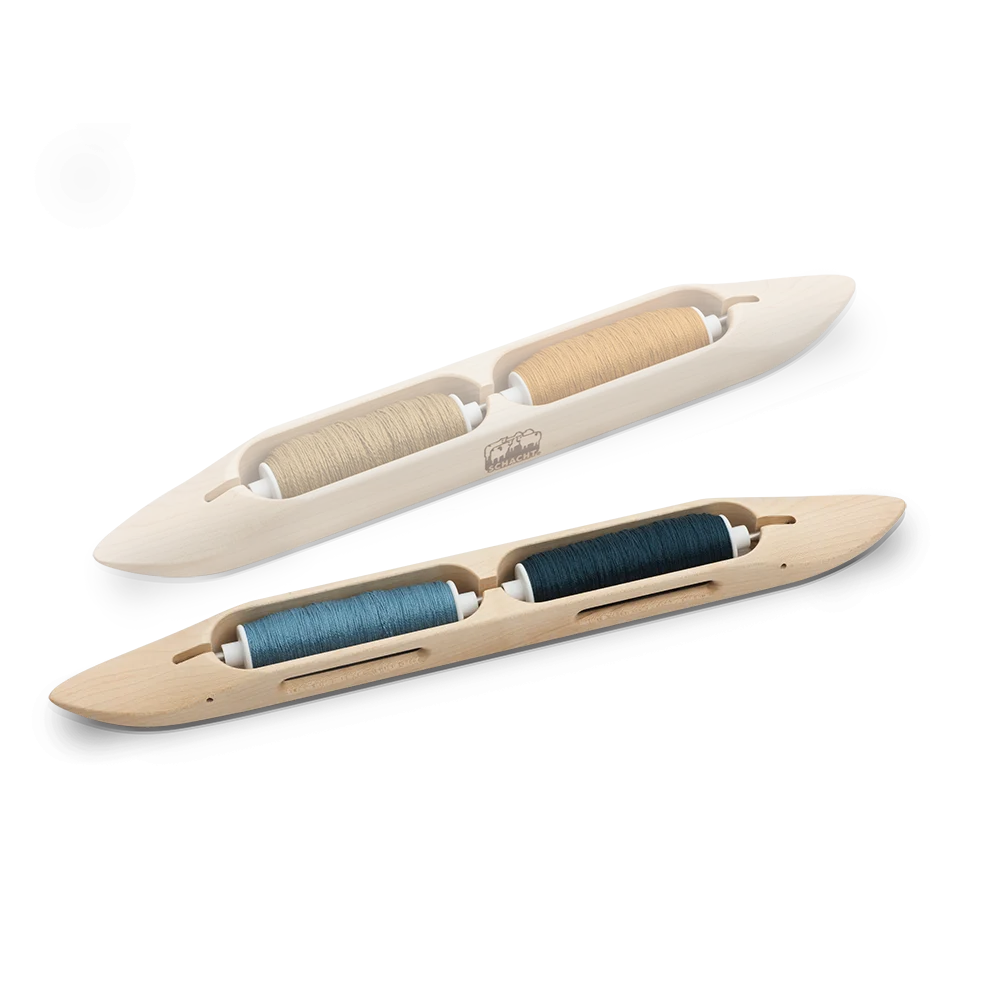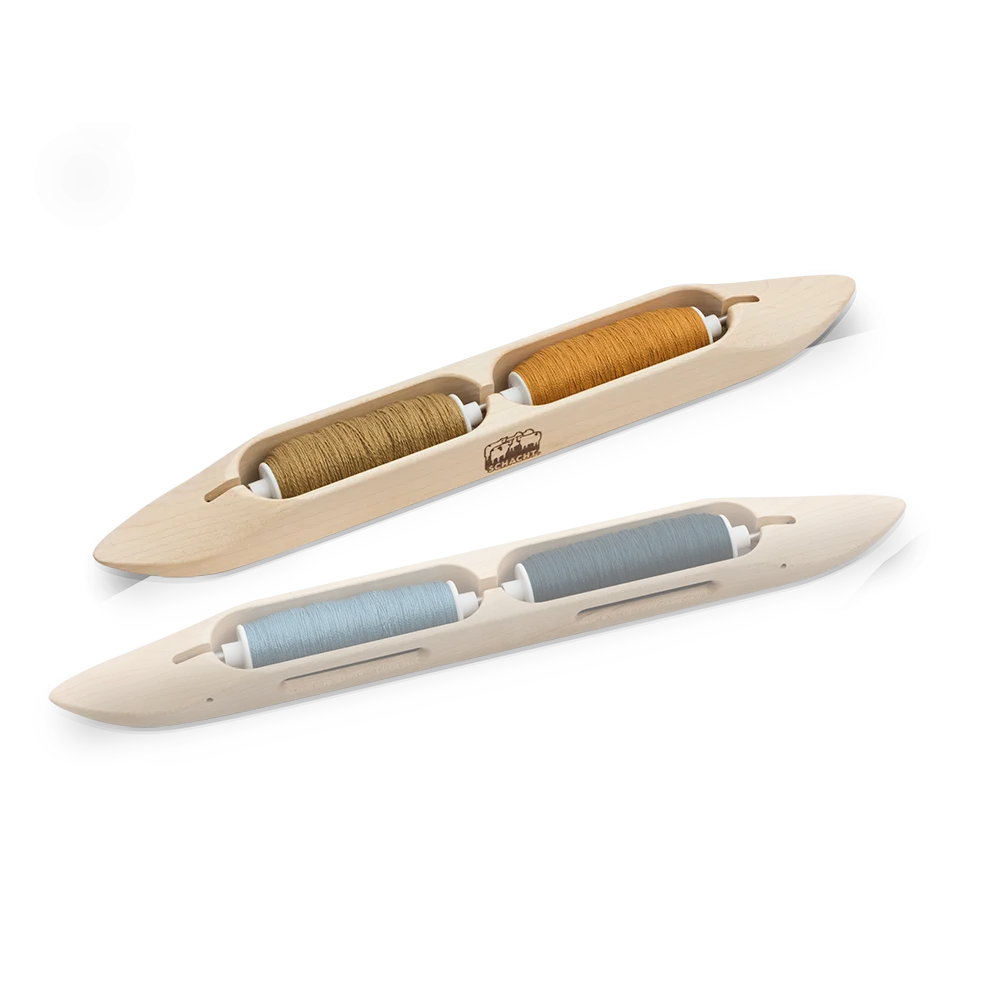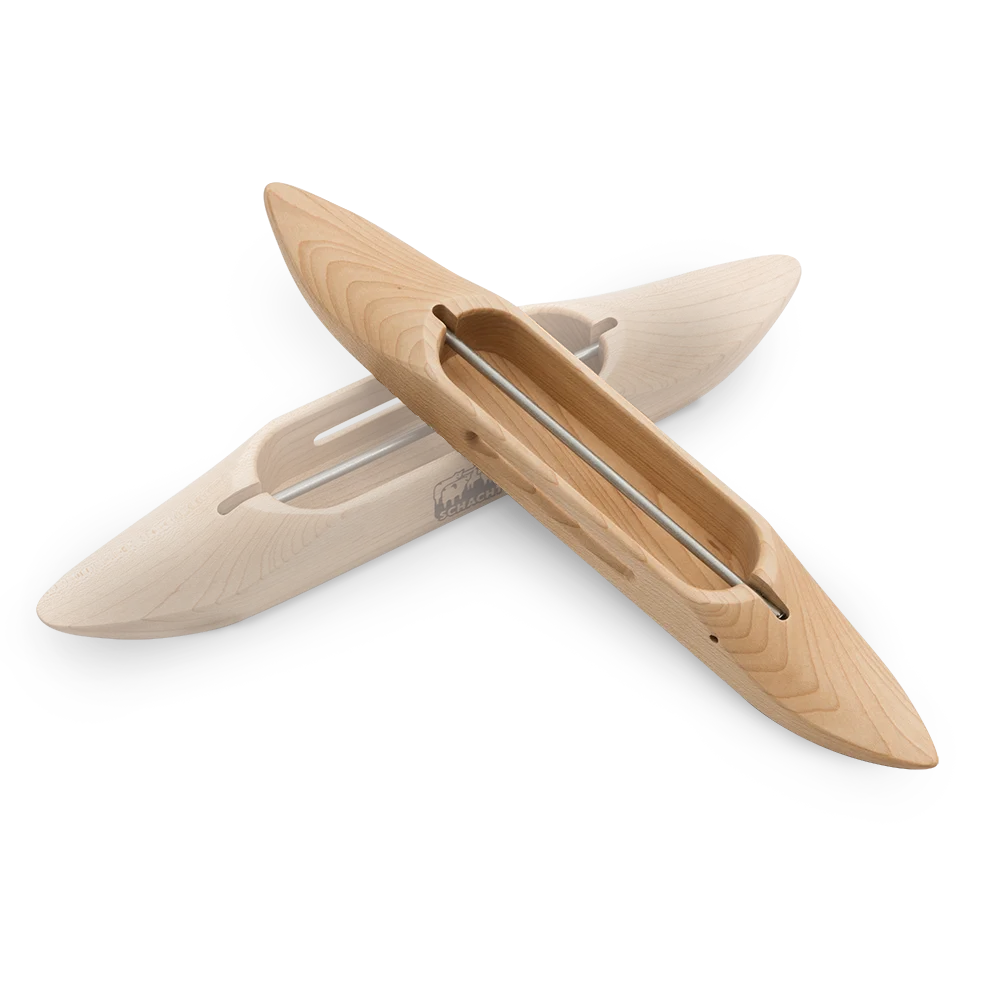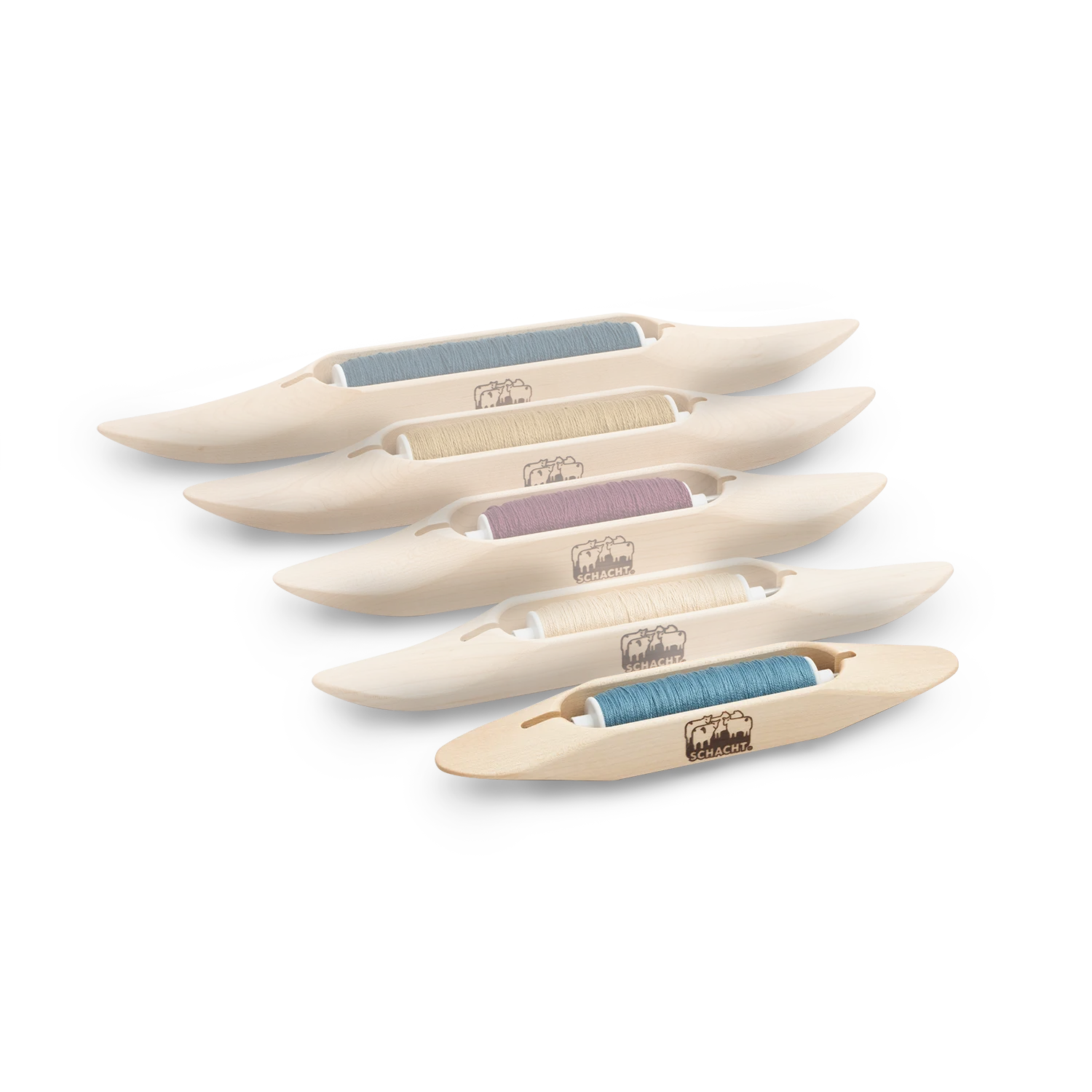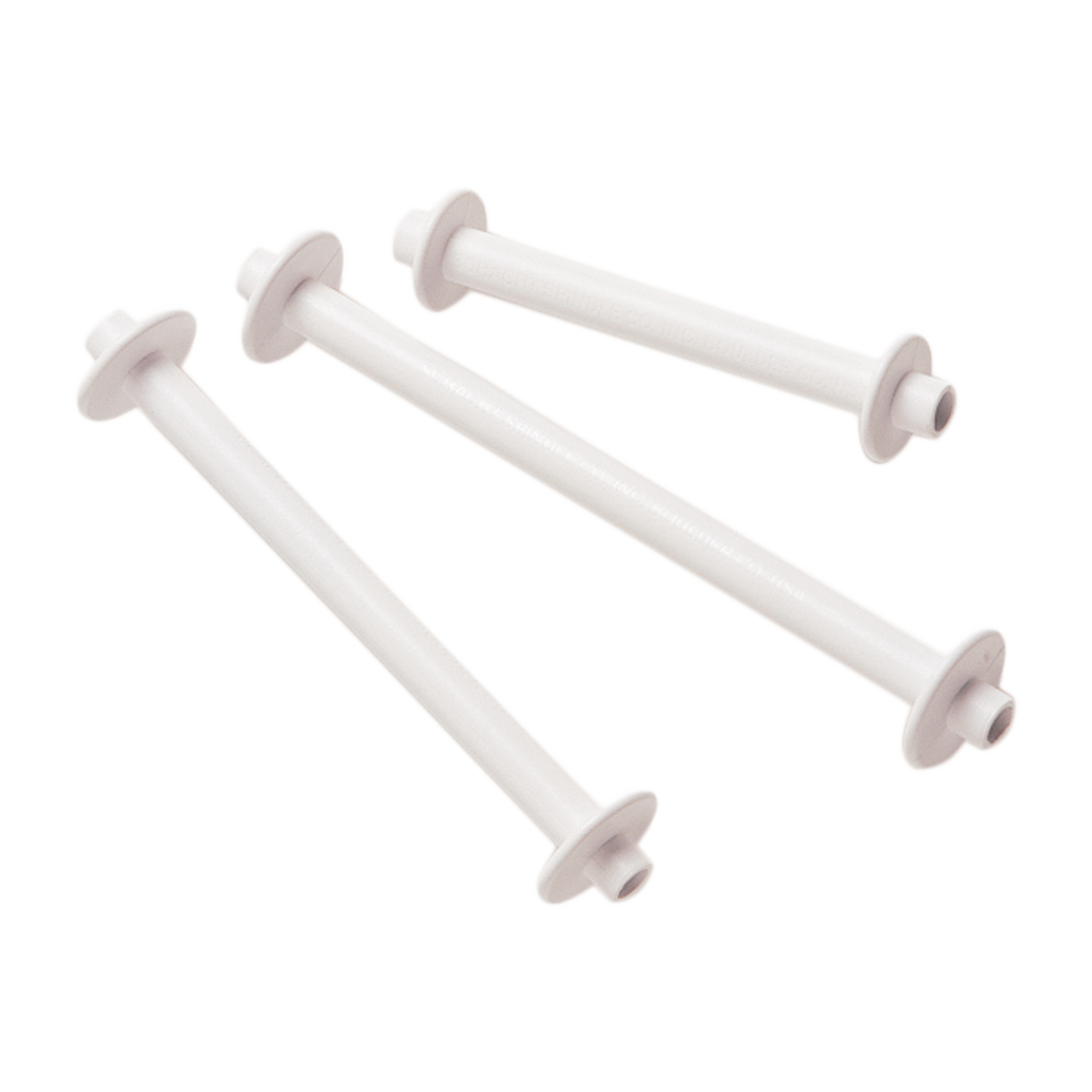Designed and woven by Rachel Simmons
Glory of Gamps: Study in Bronson Lace
Designed and woven by Rachel Simmons
Instagram: @dogwoodweavingstudio
Gamps
Gamps are a special category of sampling in weaving using a grid to focus on a certain aspect of a textile. The warp is divided so that each section of the vertical grid contains a change in a chosen warp variable. Then the weft is divided into a horizontal grid where each section contains a change in the chosen weft variable. For example, in this project, I did a deep dive into Bronson lace. For my first gamp, I divided the warp into four sections that each featured a different threading sequence of traditional, six-thread A and B units of Bronson lace. Then, as I was weaving, I divided the weft into sections that each featured a different treadling sequence of Bronson Lace. The end result of a gamp is a complete grid that shows all of the combinations on your chosen warp/weft.
A gamp is a powerful tool that serves as a reference to inform future projects and helps a weaver understand a process or structure in weaving.
Bronson Lace
Bronson Lace is a weave structure that utilizes weft floats to create textured patterning in cloth. (These weft floats on the front of the cloth are warp floats on the back, which can be equally stunning.) It is traditionally created in six thread blocks that alternate between tabby and pattern threads. The number of Bronson lace blocks possible is equal to the total number of shafts subtract 2. On a four-shaft loom, you can create two blocks of Bronson lace, an A block and a B block. Shafts 1 and 2 are reserved for tabby, leaving shafts 3 and 4 for the pattern threads. Shaft 1 serves as the main tabby whereas shaft 2 occurs every sixth thread as the “other tabby” that ties down the floats created by either shaft 3 or 4. Any lace block can also be woven in true plain weave. When a series of lace blocks are placed together, you get that classic little window between the units. For example, the block I chose to carry through my second and third gamp was an A, B, A, A, B, A block sequence. The two A blocks in the central area of the six-block pattern created an A block unit.
The six-thread block A is threaded as 1,3,1,3,1,2 and B is threaded as 1,4,1,4,1,2. As you can see, the tabby thread 1 is alternating with the pattern thread (either 3 or 4) and the final “other tabby” thread on 2 ties down the float if you are adding another of the same block in a unit. When weaving a design with both A and B blocks, you have four choices in the cloth:
1. Lace in A, plain weave in B
2. Lace in B, plain weave in A
3. Lace in A and B
4. Plain weave in A and B
By choosing different unit lengths and combinations of your four choices of weaving in each of the block, you can create some amazing woven lace.
The Project Gamps
In this particular project, I made a series of three gamps so I could focus on a different aspect of my textile in each. The first in the series was an exploration of the Bronson lace structure. Because Bronson lace requires that every other thread be a tabby on shaft 1, I was limited by the number of heddles on the front shaft of my loom. Wanting to keep this purely a four-shaft process, I had 100 heddles to work with on my Baby Wolf loom. I chose to make four sections of 36 threads that each had a different combination of traditional 6-thread A and B blocks of Bronson lace.
From the structure gamp, I chose a square I found interesting that included A and B blocks and a short two-block unit of A and threaded all four sections with that sequence. On top of the structure, I introduced the variable of color and weave. Each column has different sequences of black and white thread. The treadling throughout the entire gamp was maintained, the only change came in the color thread that was used in each pick. Once this gamp was complete, I chose a column I found particularly inspiring, which was the dark/light threading. For the third and final gamp, I maintained the structure of the warp but used colors from a pre-selected palette to alternate dark/light and light/dark in each of my four sections. Each section of 36 threads had 18 threads that followed the dark/light color sequence and 18 threads that followed the light/dark color sequence throughout the Bronson lace 36 thread warping sequence (giving the final section a log cabin-type threading). Once again, I treadled the Bronson lace consistently in each of the sections changing only the color of threads I used as I wove. Each block contained weft of half a dark/light and half a light/dark patterning in the tradition of log cabin so that more color possibilities could be seen.
Project Specs
Gamp 1: Bronson Lace Gamp
Finished Size: 8 5/8” x 16 ¾”
Gamp 2: Color & Weave Gamp
Finished Size: 9 ¼” x 19 ¾” with 1” fringe on either side
Gamp 3: Color Gamp
Finished Size: 9 ½” x 20 3/8”
Weave structure: Bronson Lace
Number of warp ends:
Gamp 1: 168
Gamp 2 & 3: 178
Warp length: 1.5 yds
Width in reed: 20"
EPI: 15
PPI: Approx. 15
What You'll Need
-
Unmercerized 8/2 100% Cotton, 3360yds/lb, Natural, approx. 310 yds
-
Unmercerized 8/2 100% Cotton, 3360yds/lb, Black, approx. 55 yds
-
Unmercerized 8/2 100% Cotton, 3360yds/lb, Natural, approx. 175 yds
-
Unmercerized 8/2 100% Cotton, 3360yds/lb, Black, approx. 175 yds
-
Unmercerized 8/2 100% Cotton, 3360 yds/lb, Teal, approx. 75 yds
-
Unmercerized 8/2 100% Cotton, 3360yds/lb, Natural, approx. 65 yds
-
Unmercerized 8/2 100% Cotton, 3360yds/lb, Black, approx. 70 yds
-
Unmercerized 8/2 100% Cotton, 3360 yds/lb, Turquoise, approx. 100 yds
-
Unmercerized 8/2 100% Cotton, 3360 yds/lb, Pale Limette, approx. 130 yds
-
Unmercerized 8/2 100% Cotton, 3360 yds/lb, Royal Blue, approx. 100 yds
- Schacht Baby Wolf 4-Shaft Loom
- 15-dent reed
- Two Shuttles
Materials for Gamp 1: Bronson Lace Gamp
Materials for Gamp 2: Color & Weave Gamp
Materials for Gamp 3: Color Gamp
Equipment
Directions
Gamp 1: Bronson Lace Gamp
Warp the loom with a 1.5 yard warp following your preferred method following the threading and color sequence.

Weave following the treadling drafts for sections 1-4 and hemstitch the beginning of the gamp.

Continue weaving following the treadling drafts for sections 5-9.

Hemstitch the end of the gamp. Cut the gamp from the loom (leaving at least 2 inches of fringe). Wash the gamp and lay flat to dry. Use an iron as needed. Trim the fringe to approximately 1 inch on each side.

Use labels to mark each section of your gamps for future reference.

Gamp 2: Color & Weave Gamp
Warp the loom with a 1.5 yard warp following your preferred method following the threading and color sequence.

Weave following the treadling drafts for sections 1-3 and hemstitch the beginning of the gamp.

Continue weaving following the treadling drafts for sections 4-6.

Hemstitch the end of the gamp. Cut the gamp from the loom (leaving at least 2 inches of fringe). Wash the gamp and lay flat to dry. Use an iron as needed. Trim the fringe to approximately 1 inch on each side.

Use labels to mark each section of your gamps for future reference.

Gamp 3: Color Gamp
Warp the loom with a 1.5 yard warp following your preferred method following the threading and color sequence.

Weave following the treadling drafts for sections 1-3 and hemstitch the beginning of the gamp.

Continue weaving following the treadling drafts for sections 4-6.

Hemstitch the end of the gamp. Cut the gamp from the loom (leaving at least 2 inches of fringe). Wash the gamp and lay flat to dry. Use an iron as needed. Trim the fringe to approximately 1 inch on each side.

Use labels to mark each section of your gamps for future reference.


